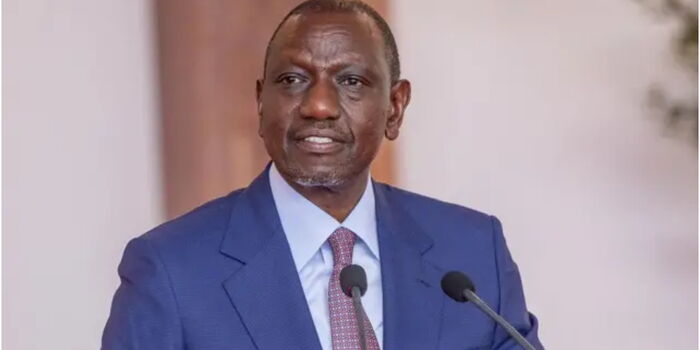Global credit rating agency Moody’s has raised serious concerns about Kenya’s growing debt levels, specifically criticizing the government’s increasing dependence on local borrowing to manage the massive amounts it owes.
In a report released on Wednesday, July 23, Moody’s projected that the cost of repaying Kenya’s debt will remain very high. The agency warned that the country’s strategy of turning to the domestic market for funds to bridge budget gaps may end up doing more harm than good to its credit health and long-term financial stability.
According to the report, Kenya plans to rely heavily on local borrowing, with nearly two-thirds of its annual financing—equal to just under 4% of the country’s GDP—expected to come from domestic sources.
However, this approach, Moody’s cautioned, will continue to strain Kenya’s ability to afford its debt, which remains a major weakness in its credit rating.
“This continued dependence on domestic markets will weigh down debt affordability, which remains a key concern in Kenya’s credit profile,” the agency noted.
Moody’s also pointed out that Kenya’s tax revenue is too low to support its growing financial needs, with the tax-to-GDP ratio stuck at around 17%. That means the government isn’t collecting enough taxes relative to the size of the economy.
On top of that, Moody’s flagged Kenya’s spending habits as unsustainable. Nearly one-third of the government’s total revenue goes toward interest payments on debt.
When you factor in other major costs like public sector wages, funds allocated to county governments, and pension obligations, over half of the budget ends up covering recurring expenses—leaving very little room for cutting costs or investing in development.
In the 2025/26 budget passed last month, Treasury Cabinet Secretary John Mbadi announced the government’s plan to borrow Ksh923.2 billion. Of this, Ksh287.7 billion will come from foreign sources, while a massive Ksh635.5 billion is expected to be borrowed from the domestic market.
Kenya’s new budget stands at a record Ksh4.2 trillion—its biggest ever. The National Treasury projects total revenue collections of Ksh3.322 trillion for the financial year, which includes ordinary revenue, grants, and other funds.
Currently, Kenya’s public debt has ballooned to Ksh11 trillion. Of that, around Ksh5 trillion is borrowed from the local market (domestic debt), while Ksh5.09 trillion is owed to foreign lenders, including multilateral institutions, individual countries (bilateral lenders), and private investors (commercial lenders). Domestic debt is mostly made up of Treasury Bills and Bonds.
Kenya’s debt level now stands at 63% of its GDP—significantly higher than the recommended threshold of 55%.
Even though CS Mbadi has repeatedly assured the public that Kenya is still capable of repaying its debt, Moody’s identified several red flags that could derail that promise.
For example, Moody’s revealed that although Treasury bond yields have dropped by nearly half over the past year, Kenya’s interest-to-revenue ratio is still worryingly high at 33%.
That means for every Ksh100 the government collects, Ksh33 goes straight into paying just the interest on its debt—not even touching the actual amount borrowed. This places Kenya among the top six countries globally with the highest debt servicing burdens.
This 33% interest-to-revenue ratio is a critical financial indicator. It shows how much of a country’s income from taxes and other sources is being used just to cover interest payments.
And when such a large chunk of revenue is tied up in paying interest, the government is left with very little room to fund essential services like healthcare, education, infrastructure, and other development projects.
To prevent the situation from worsening, Moody’s recommended that Kenya urgently strike a new financing deal with the International Monetary Fund (IMF). Such a program would help Kenya manage its heavy external debt obligations, which currently average $3.5 billion (about Ksh450 billion) annually.
The Kenyan government is scheduled to meet IMF officials again this coming September as it works toward securing more funding and support.
Join Gen Z New WhatsApp Channel To Stay Updated On time https://whatsapp.com/channel/0029VaWT5gSGufImU8R0DO30


